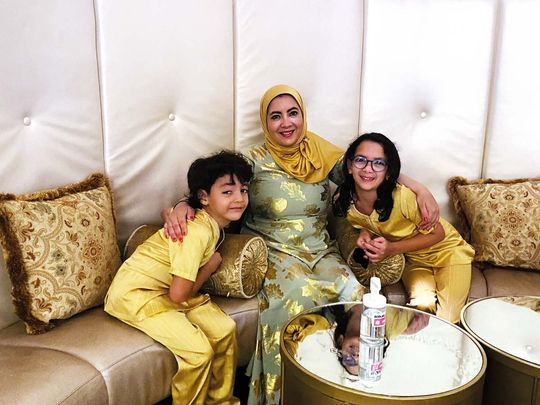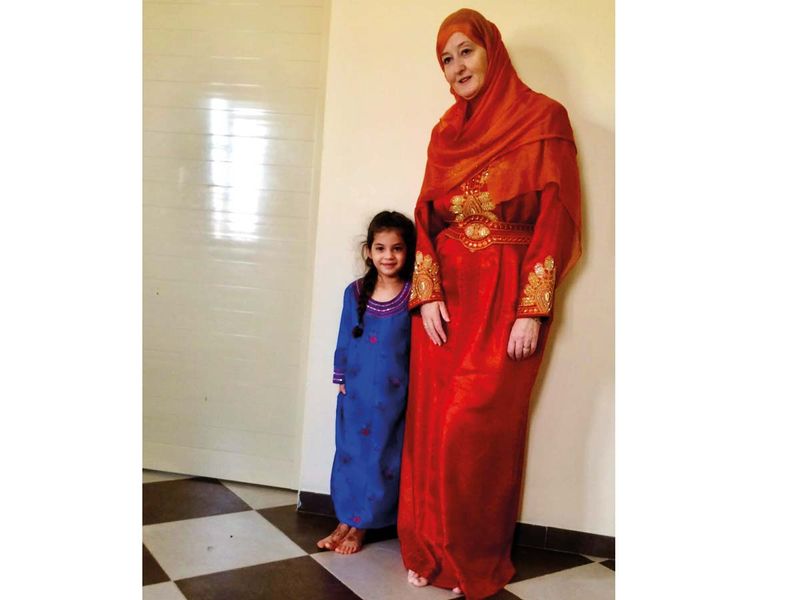
We are about 10 days away from Eid Al Fitr, the three-day celebration that marks the end of Ramadan — the holy month of fasting and introspection, and preparations have already begun. This year, Eid falls either on April 9 or 10, based on the sighting of the moon.
It’s the time for reconnection, feasting, and celebration for families. “The focus of this annual big day is on maintaining and nourishing family ties and reaching out to our most beloved people,” says Emirati Mohammed Al Hammadi.
“In the rural parts of the UAE, we can still witness interactive Eid days where majlises are wide open for visitors and traditional Eid dishes, such as harees and ouzi, an Arabic rice preparation with braised whole lamb or goat, are served. We can also enjoy some traditional folk dances, while young people take part in poetry chanting,” he says.
In cities, expats contribute their distinct customs and practices to the celebration of Eid. Syrian expat Mohammed Kashi says one of his fondest memories of Eid is associated with his mother’s mamoul biscuits. “She used to bake one with a one dirham coin and we’d eagerly try to find it,” he says. “She doesn’t do this anymore, but we still bake traditional mamoul biscuits before Eid. We usually bake it in huge batches as we welcome lots of guests during Eid.”
For Pakistani expat Qurat Ul Ann, Eid begins by eating something sweet, marking the end of the fasting period.
“It’s a tradition in my family to have something sweet before we proceed for our Eid prayers in the morning.”
Algerian expat Nour El Houda Ghediri prepares a number of sweets for Eid, including sablés, kaak ennakach and dziriat.
Tradition matters
But there’s more to celebrating the occasion than just sweets. “An important element to celebrating Eid is wearing new clothes. It’s a sunnah of the Prophet (PBUH) and we’re encouraged to do that,” says British-Emirati Alison Watt.
“While in many countries that might be a matter of going to a mall and buying a ready-made outfit, in Emirati culture, it’s a custom to visit a tailor for Eid garments. Several weeks before Eid, I go out and choose the fabrics with my daughter. The next step is to take it to the tailor and choose designs for our outfits from options available at the store. Some have embroideries, some have crystals or beads, while some designs are relatively simple and understated.
“We usually make two or three outfits for three days of Eid. When my daughter was younger, we often had matching outfits but now that’s not cool for a teen. Of course, no outfit would be complete without shoes and handbags,” says Watt, adding, “We also get a new abaya for Eid, usually in a fancier design. After collecting the clothes from the tailor, we go to a souq to choose the scarves. These are mostly in chiffon or light cotton.”
Ghediri agrees, as she says, “New clothes are a big tradition, so we try to go to a tailor, choose some really nice fabrics, and get the outfits stitched for children, which they wear when they wake up on the day of Eid. They love these new clothes,” she says.
Ghediri also makes sure that her two children wake up to a decorated home and special gifts. “I get them special gifts on Eid and birthdays. They get whatever they want, but within a budget. So they make a wish list and I get them the gifts wrapped in a special paper. I always use a gold wrapping paper and a gold ribbon that I get every year along with gold balloons.”

Another tradition that Ghediri talks about fondly and tries to keep alive is the application of henna.
“When my kids sleep at night, I make sure that I put henna on their hands. Usually, in Algeria, we apply henna on the thumb and the forefinger of the boys; and it looks like a gun. Boys like it so much. And for the girls, it’s just a small circle on the palm of the hand. Here, I also apply it on my children’s hands and I cover it with cotton socks, so that when they wake up in the morning, they can just wash it off and see the designs.”
Qurat Ul Ann explains that in her culture, women apply henna the night before Eid, which is also a celebratory occasion when people get together. “On this night, ladies gather, buy and share bangles and apply henna on their hands,” Ul Ann says. “This is called chaand raat, the night of the moon. Earlier, senior members of the house would spend the evening prepping for sweets that everyone would enjoy in the morning,” she adds, while recalling her own childhood.
A big part of Eid is connecting with others. Ul Ann says that during her childhood, the tradition was to exchange cards.
“We used to get plenty of Eid greetings cards from relatives. I really miss that tradition a lot. But it’s been replaced by digital greetings now,” she says, adding that she still keeps in touch with people on her contact list. “I always send them a wish. While it’s digitalised now, wishing people is a beautiful part of Eid celebrations.”
During Eid, families also welcome many visitors, so preparations for gatherings often begin up to two weeks in advance.
Ul Ann says, “The planning will soon begin. As Eid is celebrated over three days and it’s packed with activities and get togethers, we have to plan in advance. Soon I will decide on the guest list and send out the invites.”
After confirming the guest list, Ul Ann will start working on the menu. ”I always keep the notepad open on my phone and write down ideas as they come. And then the table preps will happen two days ahead of Eid,” she says.
Another tradition that unites the cultures is Eidiya. “Children wait for Eid for their Eidiya gifts, where elders give away money to the younger ones,” says Al Hammadi.
Ul Ann says, “While Eidiya involves the tradition of giving money to children, women sometimes also get Eidiya from their husbands, and daughters-in-law get gifts of money from the seniors in the family.”
For expats without families in the city, they have plenty of things to do to keep them occupied during the extended weekend.
Indian expat Amaan Ahmad, for example, plans to spend his holidays with his friends, exploring historical sites, such as the Al Fahidi District.
“I am also looking forward to discover unique culinary favourites of Eid from other cultures,” he says.
The UAE is, after all a melting pot of nationalities, why shouldn’t it be a melting pot of traditions? ■





